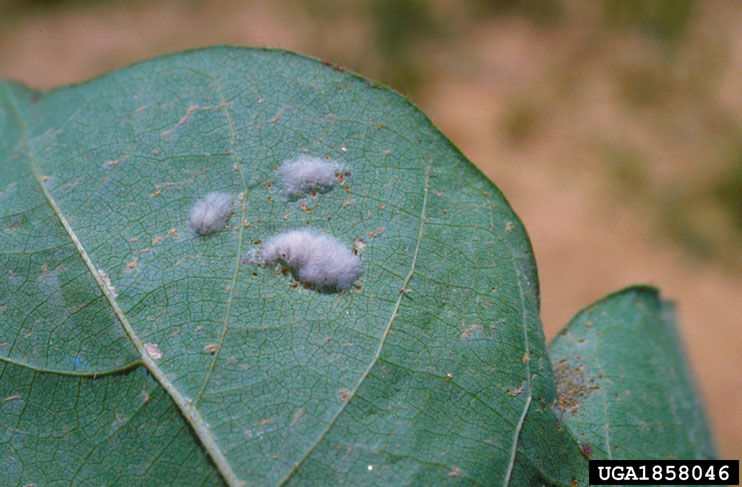3 MIN READ
Monitor Beet Armyworms in Cotton
March 5, 2023
Beet armyworm (BAW), Spodoptera exigua (Hübner) (Lepidoptera: Noctuidae) can be a cotton pest throughout the growing season but can be more prevalent under droughty conditions and in fields with pigweed pressure. BAW has a wide range of hosts that include field, vegetable and flower crops as well as many weed species. This wide range of hosts presents additional challenges for cotton producers when developing a BAW management plan. A study in 2001 indicated that BAW consume cabbage, pepper, sunflower, cotton, and pigweed in preferential order. However, the BAW that fed on pigweed grew faster and matured quicker than other host species tested.1 Cotton can be damaged by BAW at a very high rate. Treatment thresholds vary greatly and depend on time of year, crop stage at outbreak, the plant parts being attacked, and the abundance of predatory and parasitic insects. BAW lacks a diapause mechanism so it can only successfully overwinter in warmer climates, therefore it will need to migrate into most cotton growing areas during the growing season.

Identification
Larvae. Young BAW larvae are pale green to yellow in color and can be identified by a small black dot directly above the middle pair of true legs. Young beet armyworms hatch, “web up”, and feed together on leaves for about five days. Leaf feeding damage is often initially found on just the leaf surface ("skeletonized foliage”) rather than chewing large holes through the leaf. This damage, called hits, turn tan and are distinctive and easy to see when walking through a cotton field. As larvae mature, usually in two to three weeks, they become darker in color (olive green to almost black) and form yellow lateral stripes along each side of the body and are about 1.25 inches long.

Adults. Moths are gray to brown with two yellowish bean-shaped spots near the middle of the wings. Width of wingspan is 1 to 1.5 inches. BAW typically have one to four or more generations per year (depending on the cotton production area). Development from the egg stage to the adult growth stage (turnover) takes as few as 24 days, at normal summer temperatures.2

Eggs. BAW eggs are white to pale green in color and have a round shape. BAW eggs are laid in clusters and covered with cottony white scales. Adult females can lay an average of 500 to 600 eggs in a four to ten days, with each egg mass containing 80 to 150 eggs. 2

Damage. BAW larvae are primary cotton foliage feeders but may also feed on cotton squares, blooms, and occasionally on small bolls. Larvae can also bore into the main stem causing injury to the terminals. Larvae typically feed for three weeks as they progress through five to six larval stages.1

Management strategies
- Technology. Bollgard ® 3 Technology is designed to improve protection against fall armyworm, beet armyworm, and cotton bollworm as well as increase the durability and effectiveness of the trait technology. Bollgard® 3 Technology, available in Bollgard® 3 XtendFlex® cotton and Bollgard® 3 ThryvOn™ cotton with XtendFlex® Technology, builds on Bollgard II® XtendFlex® cotton with a third protein: Vip3A.
- Weed control. With such a wide range of host plants, BAW can establish on many weed species and move to a cotton crop in season. Controlling weed species that support BAW around cotton crops and removing weed escapes in a growing cotton crop, especially pigweed (Amaranthus spp.), can help reduce potential BAW damage.
- Chemical control. See Table 1.
Economic thresholds. A general threshold is 10 active hatchouts, or active clusters of small larvae, per 300 row feet. However, where BAW have moved from pigweed to cotton, it is recommended to treat when 10 percent of blooms, squares, or terminals are damaged.2,4
Beneficial insects. It is important to identify beneficial insects correctly in the field to help prevent unnecessary insecticide applications that can disrupt beneficial lifecycles.
Insecticide applications. There are several insecticides available that are effective against BAW, see Table 1 for information about potential options.
Table 1. Insecticides effective against beet armyworm.
